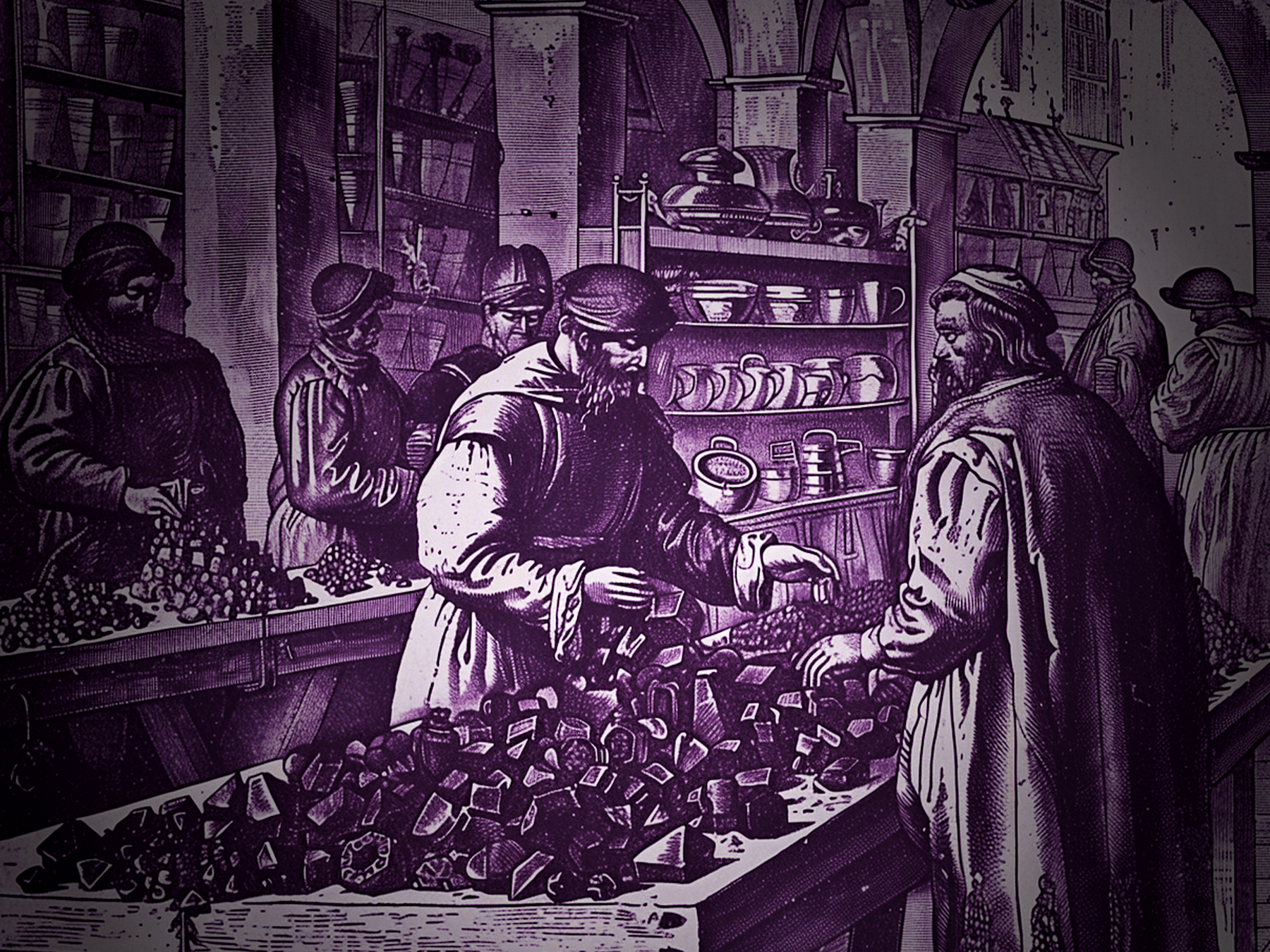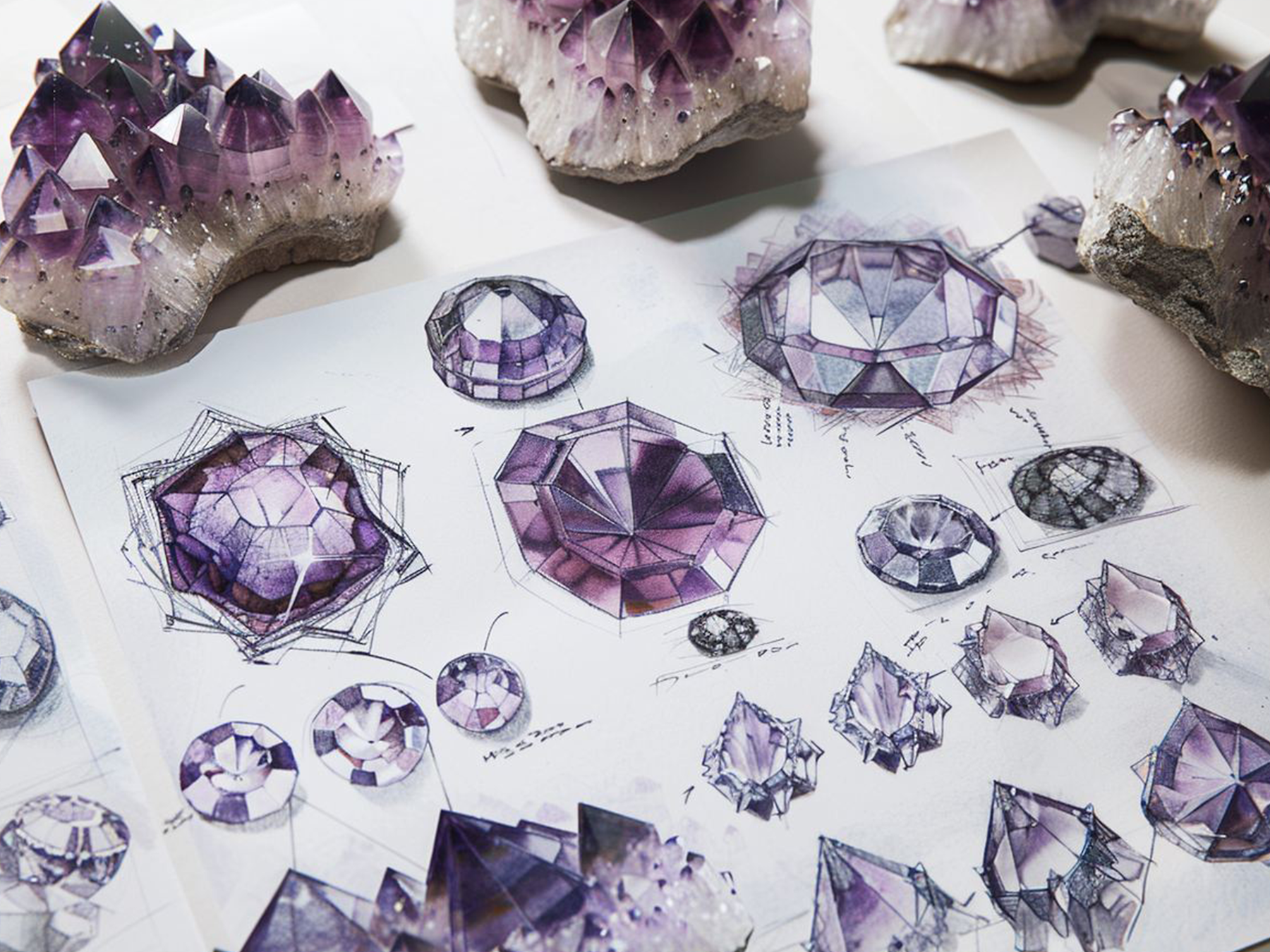
Amethyst, with its intense purple color and mysterious allure, has always been one of the most loved and cherished gemstones. Its natural beauty and deep symbolic meanings have inspired generations of artists, including the skilled artisans of Venice. From this captivating connection between Venetian tradition and the magic of this purple stone, Nereide Ametista was born.
What is Amethyst

Amethyst is a variety of quartz with a purple hue, ranging from delicate shades to deeper, more intense tones. Its beauty is enhanced by its ability to reflect light delicately, creating a luminous and enveloping effect. Thanks to its unique luster and intrinsic elegance, amethyst has been used for centuries in creating high-value jewelry and art objects.
A Brief History of Amethyst in the Serenissima
Venice became significant in the gemstone trade during the Middle Ages, especially between the 13th and 15th centuries. During this time, the Serenissima Republic of Venice was a dominant maritime and commercial power in the Mediterranean, with close trade ties to the East, particularly the Byzantine Empire and Arab territories.

Lithograph depicting gem merchants in Venice
Amethyst, originating from India and Persia, became one of the most cherished stones imported by Venice. The city played a pivotal role in spreading amethyst across Europe. Leveraging its strategic location and commercial connections, Venice contributed to transforming amethyst into a variety of high-quality artifacts. Among these were jewelry, pendants, rings, brooches, ornaments, and other valuable accessories, which became symbols of wealth and prestige during the medieval period.
Crafting Amethyst
Amethyst, with its refined crystalline structure and deep purple color, presents unique characteristics and challenges in the artisanal crafting process, which favors cold cutting. Using this technique, amethyst is shaped into various forms and sizes, such as brilliant, oval, pear, or cabochon, aiming to enhance its brightness and chromatic tone.

Subsequently, the polishing phase begins, using fine-grained abrasives and polishing compounds to give the stone an impeccable and uniform surface. Creating a dial follows a similar procedure but introduces further complexity: the delicate cutting of a 0.4 mm thick amethyst disc. This operation requires exceptional precision and careful tool control, given the stone's intrinsic fragility and susceptibility to chipping.
Nereide Ametista: Between Technology and Past
At the heart of our inspiration and aesthetic choices always stands Venice; Nereide Ametista emerges as the third chapter of a series of projects dedicated to the historical productions of Venetian craftsmanship. Among these, glass art and metalworking stand out as prominent examples. A universe made of ancient workshops, manual expertise, relentless research, and a passion for excellence have established Venice as a hub for some of Europe's most refined artisanal productions.

Nereide Ametista combines the rich Venetian artisanal tradition with the experimentation of contemporary materials. In addition to the precious dial, it is distinguished by the use of a tungsten bezel, a virtually indestructible metal widely used in various industries for its excellent mechanical properties and durability.
Want to know more?
Contact us on Whatsapp o Explore the Collection













